#John F. Seitz
Explore tagged Tumblr posts
Text





"I could smell that honeysuckle again."
Double Indemnity (1944) dir. Billy Wilder
#double indemnity#double indemnity 1944#movies#b&w#capspam#billy wilder#my edits#fred macmurray#barbara stanwyck#edward g. robinson#james m. cain#john f. seitz#thriller#noir#film noir#classics#films#filmedit#movieedit#film caps#movie caps#userfilm#tusergeorgia#userbronson
106 notes
·
View notes
Text
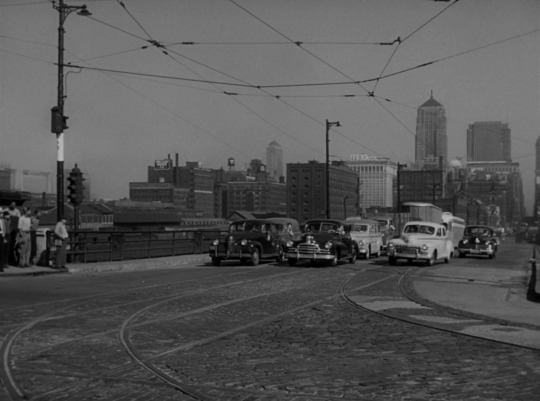
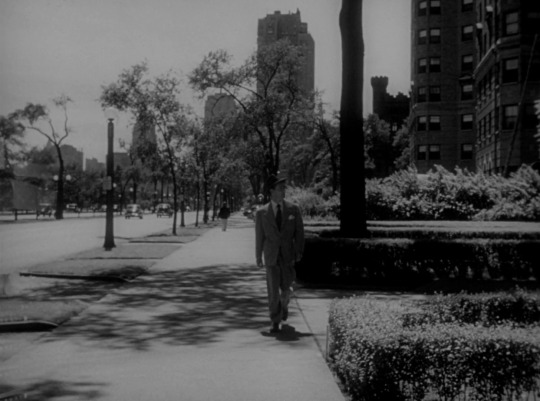

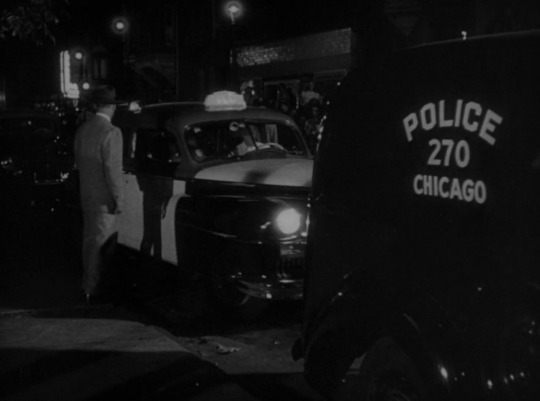
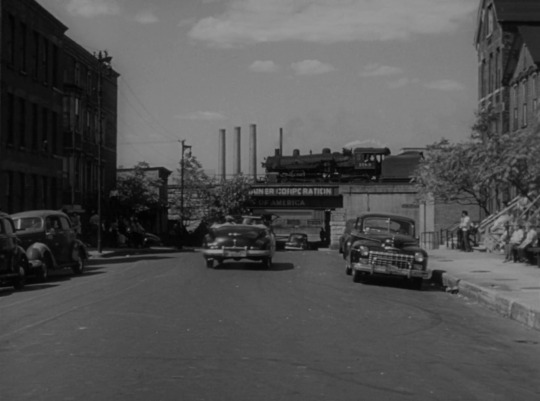
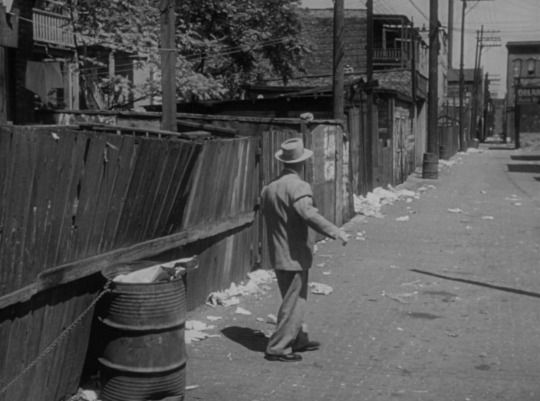
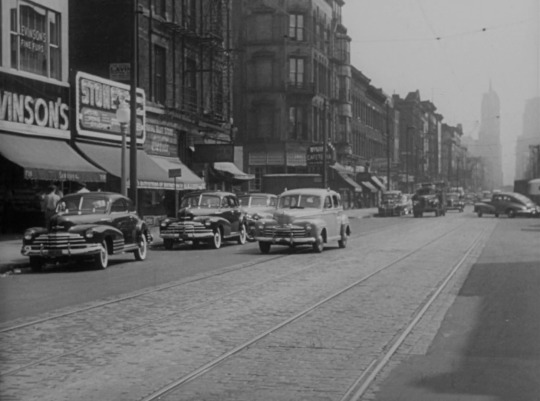
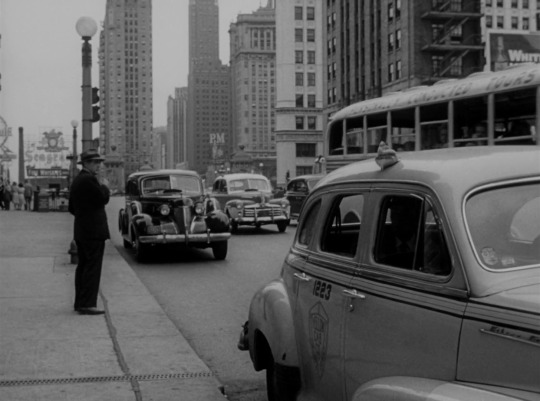
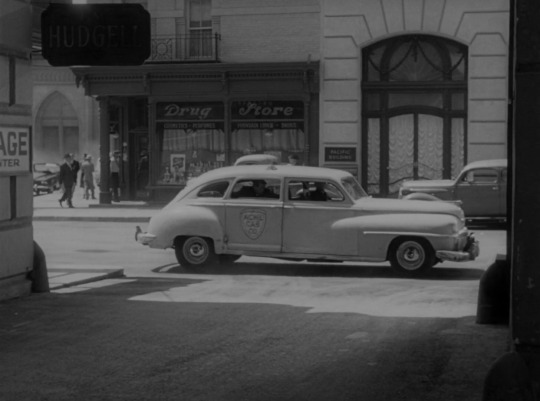
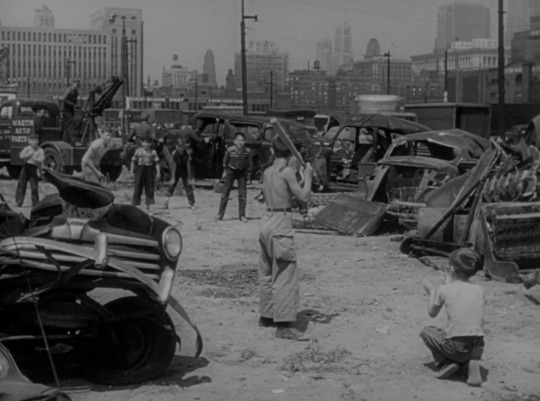
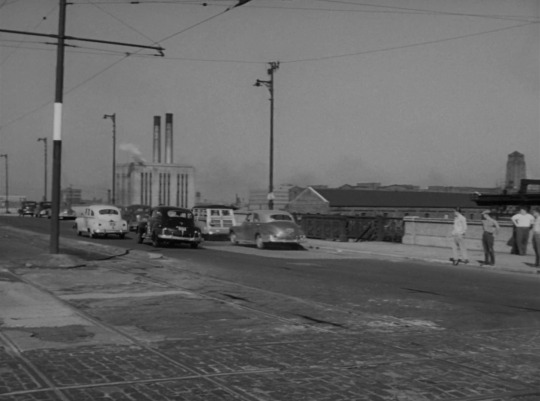
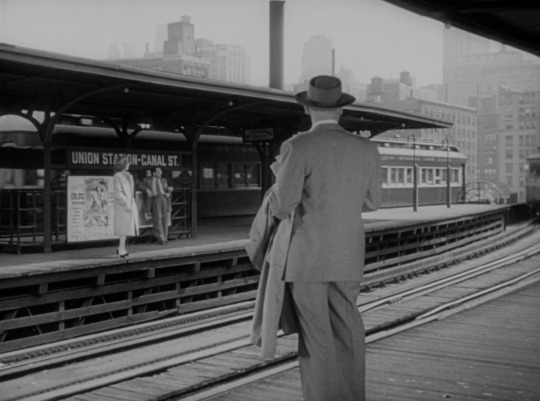
Chicago Deadline (Lewis Allen, 1949).
11 notes
·
View notes
Text
Gli invasori spaziali
Benvenuti o bentornati sul nostro blog. Nello scorso articolo siamo tornati a parlare di film in live-action ma senza spostarci dalla fantascienza, prendendo in esame un’opera di Steven Spielberg degli anni ’70 che ha fatto la storia del cinema ossia Incontri ravvicinati del terzo tipo. Nel mondo iniziano ad avvenire strani fenomeni, come la comparsa di veicoli creduti scomparsi da anni, delle…
#20th Century Fox#alieno#Arthur Franz#Arthur Roberts#Bert Freed#Charles Cane#Douglas Kennedy#Edward L. Alperson#film#Gli Invasori spaziali#Gli Invasori spaziali 1953#Helena Carter#Hillary Brooke#Invaders from Mars#Invaders from Mars 1953#Janine Perreau#Jimmy Hunt#John Eldredge#John F. Seitz#John Tucker Battle#Kathy Wilson#Leif Erickson#Max Wagner#Milburn Stone#Morris Ankrum#movies#National Pictures Corp.#Pat Blake#Peter Brocco#Raoul Kraushaar
1 note
·
View note
Text

Sunset Boulevard (1950), dir. Billy Wilder
0 notes
Text











Double Indemnity (1944)
Director: Billy Wilder
Cinematographer: John F. Seitz
#classicfilmsource#oldhollywoodedit#classicfilmedit#classicfilmblr#double indemnity#filmblr#fred macmurray#billy wilder#barbara stanwyck
337 notes
·
View notes
Text










Sunset Boulevard (1950)
Director: Billy Wilder DOP: John F. Seitz Art Direction: Hans Dreier & John Meehan Set Decoration: Sam Comer & Ray Moyer
#cinematography#film stills#visual storytelling#sunset boulevard#billy wilder#william holden#gloria swanson#1950s#50s#50s cinema#50s fashion#classic hollywood#classic film
12 notes
·
View notes
Text
Happy 56th Birthday Isshin Chiba!
Happy birthday to the hard working man who voiced Jin Kazama from Tekken for over 20 years in all of his appearances since Tekken 3. He is known for having a badass deep voice (though some say he is actually pretty versatile in terms of voice acting range). He was born in Kesennuma, Miyagi, Japan, and he graduated from Miyagi Prefecture Kesennuma High School. The man originally wanted to be a stage actor, but then he decided to attend an academy for voice acting in Tokyo instead. Isshin Chiba started voice acting in 1990 at the very young age of 22 years old, and eventually landed the role of Jin Kazama from Tekken in 1997. He had been the voice of Jin Kazama since he was like 29 years old. He voiced Jin Kazama not just in the mainline Tekken games, but also crossover games (Project X Zone) and even the Japanese dub of that shitty Tekken live action movie.
This makes him the sixth single voice actor across many different languages to have voiced a video game character the longest, the others being Ed Boon as Scorpion in Mortal Kombat (until he was replaced by Patrick Seitz (who voices Ragna the Bloodedge and Germany from Hetalia Axis Powers in English) in MK9 and MKX), Takenobu Mitsuyoshi as Kage Maru in Virtua Fighter, Shinichiro Miki (Millennial Tree Cookie's Japanese VA) as Akira Yuki, also from Virtua Fighter, Joseph D. Kucan as Kane from Command and Conquer, and Charles Martinet as the iconic Italian video game plumber Mario (as well Luigi, Wario, Waluigi, and now he is the voice of a character from Dragon Ball's English Dub).
Some of Isshin Chiba's other roles include:
-Jedah Dohma (Darkstalkers)
-Yamikage and Monsieur Goan (Kirby Right Back At Ya Anime)
-Kyosuke Kagami (Rival Schools)
-Fubuki Spring (Scarlet Nexus)
-Silver Knight (.hack//)
-John Tanaka (F-Zero GP Legend)
-Koga Kuchiki (Bleach)
-Ikeda Yaemon 18th (Gintama)
-Dio Brando (Capcom's Jojo Bizarre Adventure Fighting Game in the 1990's)
-Ryuji Danma and Hiroshi Kochatani (Great Teacher Onizuka)
-Mikazuki, Hammond, Gladius (One Piece)
-Joseph Oda (The Evil Within Japanese Dub)
-Trigon (Japanese dub of both the original Teen Titans and Teen Titans Go)
-Etrigan The Demon (Japanese dub of Batman: The Brave and The Bold)
-Rei (2005 Fist of The North Star Fighting Game)
-Cyclonus (Transformers Japanese Dub)
-Some Tokusatsu
Thank you Isshin Chiba for voicing our boy Jin Kazama for so long, and I hope you have a wonderful day!~


10 notes
·
View notes
Text



Harry Carey practising fire safety with a kerosene lamp directly before being set on fire with said lamp in The Trail of '98 (1928)
[letterboxd | imdb]
Director: Clarence Brown
Cinematographer: John F. Seitz
Performers: Harry Carey, Ralph Forbes, Dolores del Río
#1920s#1928#Clarence Brown#Harry Carey#my gifs#american film#stunts#flash warning#classic film#classic movies#silent cinema#silent era#silent film#silent movies#cinema#film#film gif#classicfilmblr#classic cinema
10 notes
·
View notes
Text
The Magician

After directing some of Hollywood’s greatest silent films and making stars of his wife, Alice Terry, Rudolph Valentino and Ramon Novarro, Rex Ingram (not to be confused with the wonderful actor) relocated to France in search of greater freedom. That concept of freedom was relative. His European films feature images and subjects that would have been untenable at his home studio, MGM, but they still reflect the tastes of the viewing public. His once-lost film THE MAGICIAN (1926, TCM, YouTube) is filled with transgressive imagery and a villain (Paul Wegener) who queers both domesticity and the world of science, but it’s classic Hollywood horror queerness, a destructive force that must be defeated in the name of traditional values.

Terry is a sculptress working on a large statue of a faun, a flirtation with the world outside normal society. When it collapses on her, she’s left paralyzed. Her savior is a handsome doctor (Ivan Petrovich), and the two fall in love. But she also attracts the attention of occultist Oliver Haddo (Wegener), who uses his hypnotic powers to steal her from Petrovich. Ingram’s script, adapted from a W. Somerset Maugham novel loosely based on Aleister Crowley’s public image, tips us off to Wegener’s goal early. To complete an ancient spell for the creation of life, he needs the heart’s blood of a maiden, so his marriage to Terry is in name only. It’s a queer variation on the role of matrimony in creating new life and, as such, an assault on conventional morality.
Ingram directs all this quite seriously, which was rare for a silent film dealing with horror. He allows Wegener, the star and sometime director of several German expressionistic horror films to dominate his scenes, All he has to do is swell his chest and open his eyes as wide as possible to make you believe he can hold Terry in his thrall. Working with John F. Seitz, Ingram also creates striking imagery. There’s a terrific fantasy scene in which Wegener makes Terry visualize a bacchanal with near naked fauns and nymphs, some epic crowd scenes and vistas of Paris and Monte Carlo in the 1920s and striking compositions as Wegener exercises his control over Terry. There’s also some eft comic relief supplied by Gladys Hamer, who plays Terry’s roommate, and a man who loses his hat, played by Michael Powell, who was an assistant director on the film and later credited Ingram’s influence on his own work. Ingram also uses acting styles to reinforce his meanings. Petrovich and Terry are remarkably natural (and pretty darned beautiful) in contrast to Wegener’s more old-school silent-film posturing. THE MAGICIAN was a major influence on Universal’s 1930s horror films. It also features a rare on-screen appearance by Firmin Gemier, a French actor who worked with both Andre Antoine and Aurelien Lugne-Poe and created the role of Pere Ubu.

4 notes
·
View notes
Text
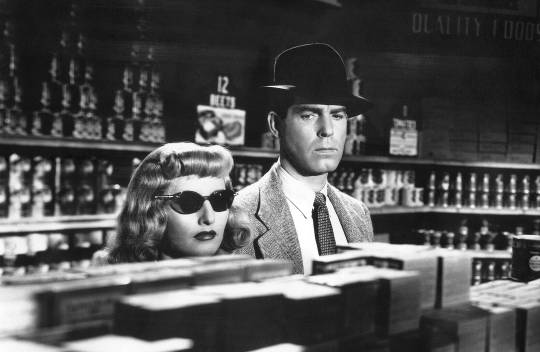
Barbara Stanwyck and Fred MacMurray in Double Indemnity (Billy Wilder, 1944)
Cast: Fred MacMurray, Barbara Stanwyck, Edward G. Robinson, Porter Hall, Jean Heather, Tom Powers, Byron Barr, Richard Gaines, Fortunio Bonanova, John Philliber. Screenplay: Billy Wilder, Raymond Chandler, based on a novel by James M. Cain. Cinematography: John F. Seitz. Production design: David S. Hall. Music: Miklós Rózsa.
Oscar-bashing is an easy game to play, but sometimes it's a necessary one. Double Indemnity was nominated for seven Academy Awards: best picture, best director (Billy Wilder), best actress (Barbara Stanwyck), best screenplay (Wilder and Raymond Chandler), best black-and-white cinematography (John F. Seitz), best scoring (Miklós Rózsa), and best sound recording. It won none of them. The most egregious losses were to the sugary Going My Way, which was named best picture; Leo McCarey won for direction, and Frank Butler and Frank Cavett won for a screenplay that seems impossibly pious and sentimental today. Almost no one watches Going My Way today, whereas Double Indemnity is on a lot of people's lists of favorite films. The reason often cited for Double Indemnity's losses is that it was produced by Paramount, which also produced Going My Way, and that the studio instructed its employees to vote for the latter film. But the Academy always felt uncomfortable with film noir, of which Double Indemnity, a film deeply cynical about human nature, is a prime example. Wilder and Chandler completely reworked James M. Cain's story in their screenplay, and while they were hardly cheerful co-workers (Wilder claimed that he based the alcoholic writer in his 1945 film The Lost Weekend on Chandler), the result was a fine blend of Wilder's bitter wit and Chandler's insight into the twisted nature of the protagonists, Phyllis Dietrichson (Stanwyck) and Walter Neff (Fred MacMurray). And as long as we're on the subject of Oscars, there are the glaring absences of MacMurray and Edward G. Robinson from the nominations -- and not only for this year: Neither actor was ever nominated by the Academy. MacMurray's departure from his usual good-guy roles to play the sleazy, murderous Neff should have been the kind of career about-face the Academy often applauds. And Robinson's dogged, dyspeptic insurance investigator, Barton Keyes, is one of the great character performances in a career notable for them. (The supporting actor Oscar that he should have won went to Barry Fitzgerald's twinkly priest in Going My Way, a part for which Fitzgerald had been, owing to a glitch in the Academy's rules, nominated in both leading and supporting actor categories.)
8 notes
·
View notes
Photo
Cast: Joel McCrea, Veronica Lake, Robert Warwick, William Demarest, Franklin Pangborn, Porter Hall, Byron Foulger, Margaret Hayes, Robert Greig, Eric Blore. Screenplay: Preston Sturges. Cinematography: John F. Seitz. Art direction: Hans Dreier, A. Earl Hedrick. Film editing: Stuart Gilmore. Music: Charles Bradshaw, Leo Shuken.
Let us now praise Joel McCrea, who never became an icon like Cooper or Gable or Grant or Stewart, but could always be relied on for a fine performance when the others weren’t available. He starred in two of Sturges’s best, the other one being The Palm Beach Story (1942), and gave solid and sometimes memorable performances for William Wyler (Dead End, 1937), Cecil B. DeMille (Union Pacific, 1939), Alfred Hitchcock (Foreign Correspondent, 1940), and George Stevens (The More the Merrier, 1943) before becoming a durable fixture in Westerns. His performance in the title role of Sullivan’s Travels is just what the movie needed: an actor who could do slapstick comedy but turn serious when necessary, a task that among major stars of the era perhaps only Cary Grant and Henry Fonda – the Fonda of Sturges’s own The Lady Eve (1941) – were also really good at. The genius of Sullivan’s Travels is that its serious parts jibe so well with its goofy ones. As Sturges has characters warn Sullivan at the beginning of his scheme to pose as a hobo to get material for his turn as a “serious” director: Poor people don’t like to be condescended to. The pivotal scene of the film is the one in which the convicts go to a Black church to watch a movie. It could have been an embarrassing display of the era’s racial stereotypes, but Sturges handles it with tact and sensitivity, so that it becomes emotionally effective and brings home the dual points about charity and the need for humor without excessive sentimentality and preachiness. Sturges’s usual gang of brilliant character players – including William Demarest, Franklin Pangborn, Porter Hall, Eric Blore, and Jimmy Conlin – are on hand. Sturges and McCrea are said to have found working with Veronica Lake a pain, but fortunately it doesn’t show.



Sullivan’s Travels (1941) dir. Preston Sturges
1K notes
·
View notes
Text

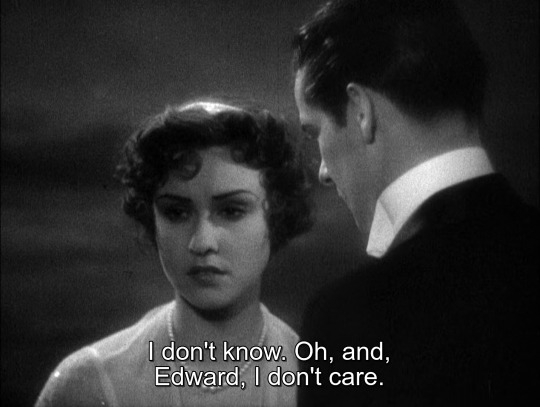
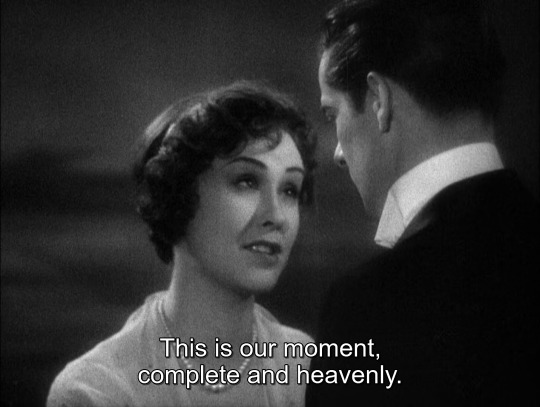

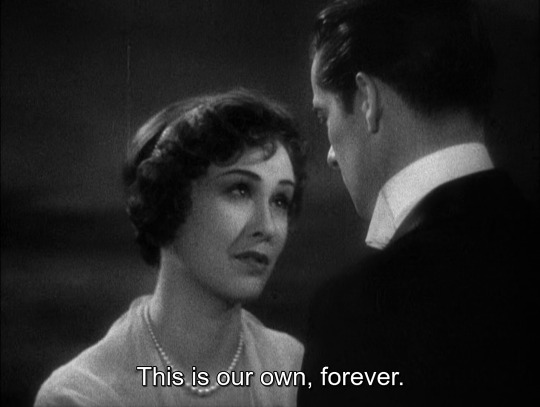
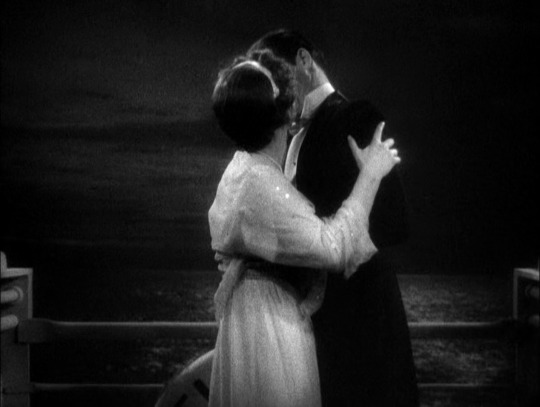

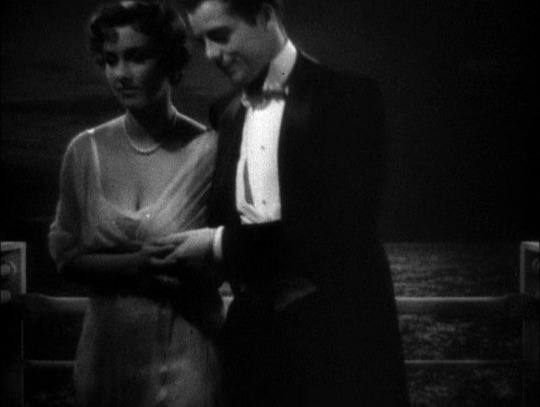


Cavalcade (Frank Lloyd, 1933).
#cavalcade#cavalcade (1933)#frank lloyd#john f. seitz#Margaret Clancey#William S. Darling#Earl Luick
19 notes
·
View notes
Text
John F. Seitz & Billy Wilder
Notes about the article 'A pair of Aces: John F. Seitz, ASC & Billy Wilder' originally published the March 2003 issue.
The article is an overview of some of the methods used by the two over the four movies they have collaborated on.
Cinematography must exist to tell the screen story, rather than to stand out as a separate artistic entity — Seitz
Symbolic compositions
Seeing their work, one element I gathered is to always pack the frame with every important information possible and have a maximum of images symbolic of the story.
One of their most famous images is the pool in 'Sunset Boulevard'. In the same frame, we can see Joe Gillis's face (the protagonist), he's drowned and the police and the press are already at the location — Symbolically, he's drowned in fame and scandal.
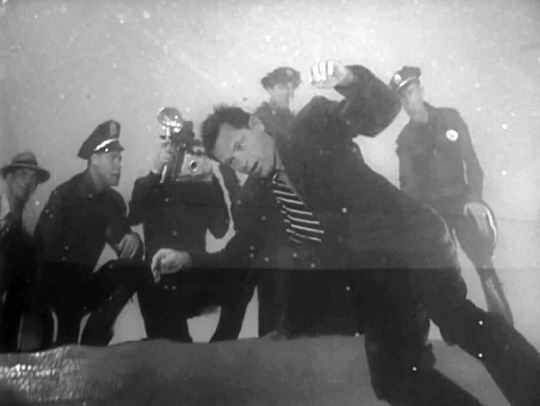
The shot was also achieved by the use of a mirror and not actually by putting the camera at the bottom of the pool — this shows that the camera doesn't have to actually be where the audience thinks it is and how a seemingly complicated shot can actually be made easier to shoot.

This shot from 'Double Indemnity' shows the whole dynamic going on visually, Walter (centre) is hiding Phylis (Left) from Keyes (On the left). Walter is at the crossroads between hiding with Phylis or coming into the light with Keyes. Dialogue, blocking and gestures guide the viewer's attention and save from using cutaways.
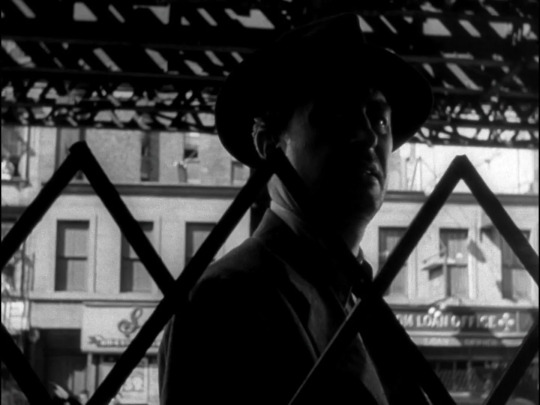
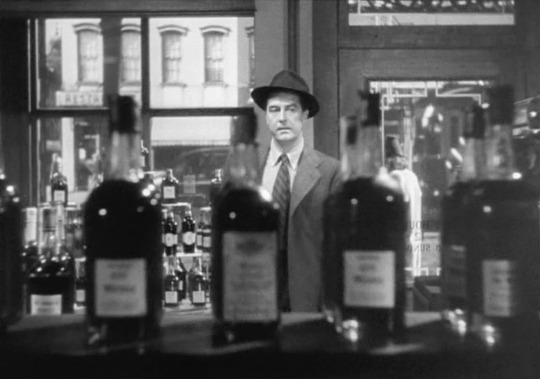
Visual interest is an opportunity for further storytelling and symbolism. In 'The Lost Weekend', places objects in the foreground such as crisscrossed bars or alcohol bottles. This visually conveys Birman's entrapment with alcohol.
Don't show what everyone already knows
Moreover, the character's state of mind is more important than action. Rather than showing the obvious, their camera highlights a character's state of mind or feeling.
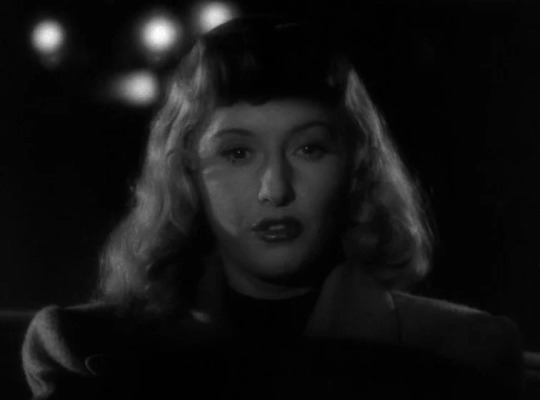
For example, the Murder of Phylis's husband happens just on the edge of the frame. As the audience knows what is gonna happen and nothing unexpected happens, the camera doesn't linger on the murder itself. Instead, it focuses on Phylis's determination, using the passing streetlights for a surreal horror effect.
Similarly, in 'Five Graves to Cairo', danger and confusion are shown in one shot during a fight between a Nazi and an English soldier: 'the camera tilts down to stare at the round lamp while the men struggle offscreen in the dark. Two gunshots produce flashes of light at the edge of the frame, and we then follow the flashlight’s beam as a hand picks the light source up and reveals the dead Nazi on the floor.'

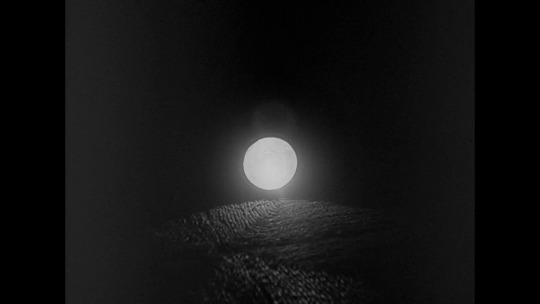
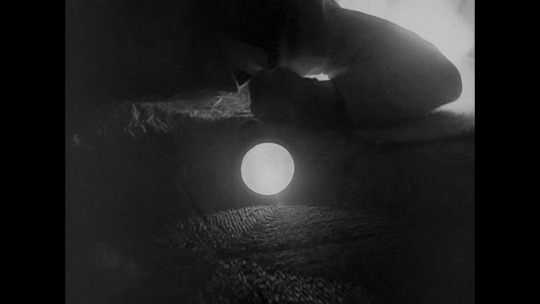
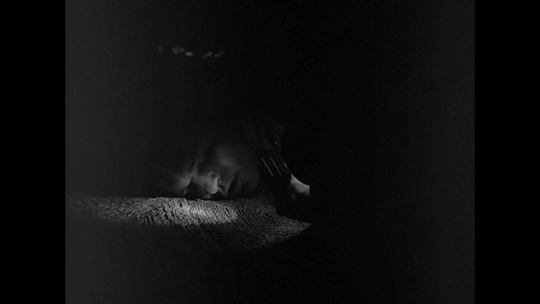
The camera doesn't showcase the choreography or specifics of the fight, just the darkness, chaos, claustrophobia and uncertainty occurring during the fight.
Textured Lighting
Another technique showcased was their lighting techniques, used to achieve a texture and rough look.
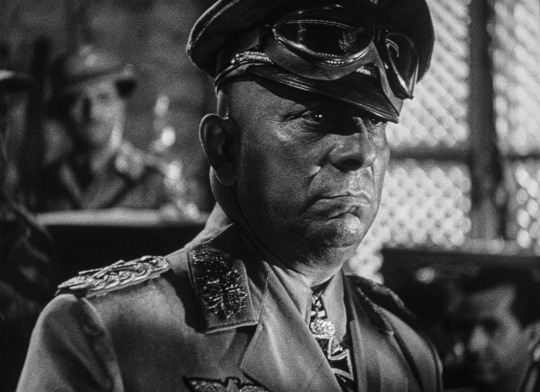
Heavy perspiration is used in 'Five Graves to Cairo' to texture the faces (this is quite reminiscent of what Sergio Leone would do later).
Lights are filtered through latticed windows, and slats in the roof to have textured shadows just about everywhere.
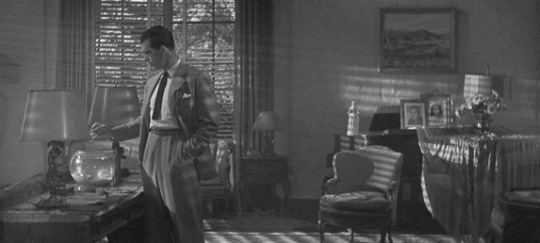
This technique is reused in double indemnity, using blinds to break up soft lights and dress the environment with shadows. The aim is to achieve a rough and dark effect.
Moreover, Seitz made a dust-blind effect with a powder of magnesium or aluminium that he blew in the air just before the camera rolled.
Wrap up
Billy Wilder was fond of using long takes (although not always noticeable to the audience) and therefore was more reliant on actors, blocking, set design and lighting to guide the viewer through the shot. This article made me understand a bit more what sort of thought process goes into designing a shot.
0 notes
Text

Sunset Boulevard (1950), dir. Billy Wilder
0 notes
Text
Double Indemnity (Billy Wilder, 1944)
Cast: Fred MacMurray, Barbara Stanwyck, Edward G. Robinson, Porter Hall, Jean Heather, Tom Powers, Byron Barr, Richard Gaines, Fortunio Bonanova, John Philliber. Screenplay: Billy Wilder, Raymond Chandler, based on a novel by James M. Cain. Cinematography: John F. Seitz. Production design: David S. Hall. Music: Miklós Rózsa.
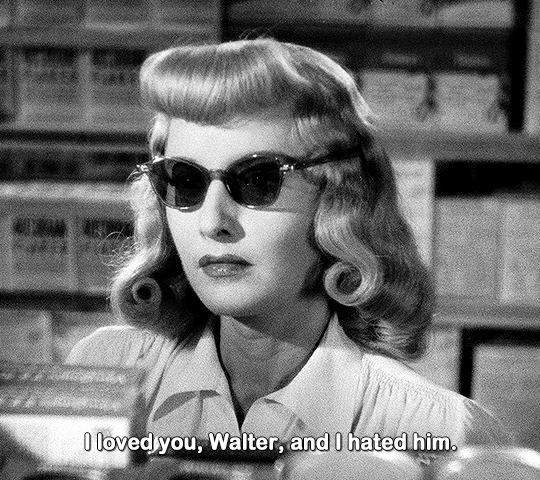
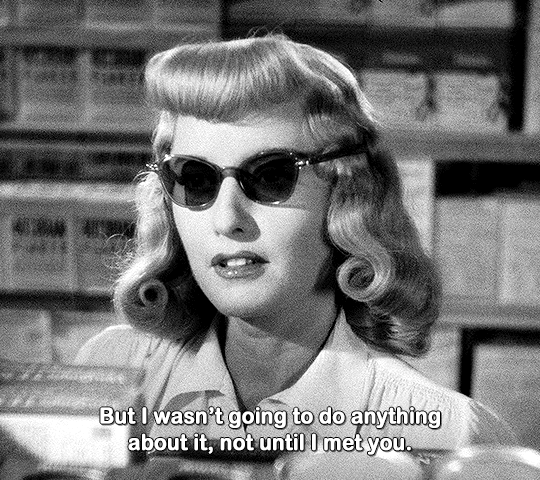
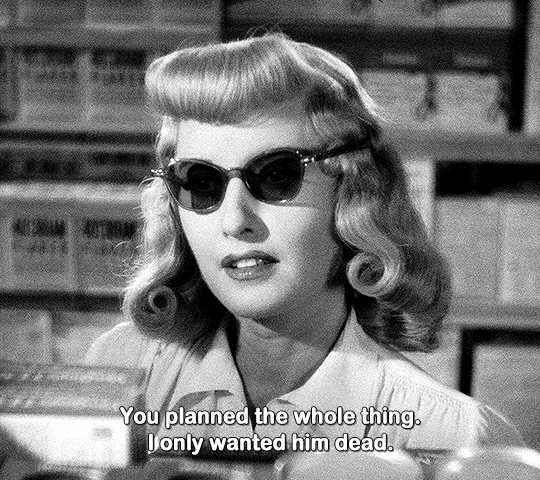
And I'm the one that fixed it so he was dead. Is that what you're telling me? - And nobody's pulling out. We went into this together, and we're coming out at the end together. It's straight down the line for both of us. Remember?
Barbara Stanwyck in DOUBLE INDEMNITY (1944) dir. Billy Wilder
808 notes
·
View notes
Text
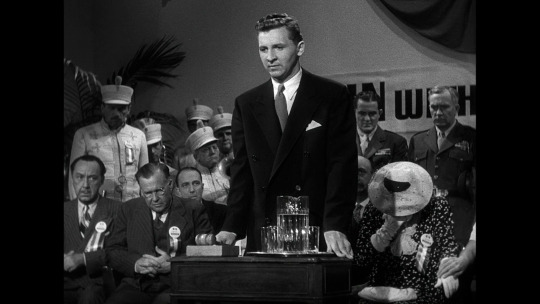
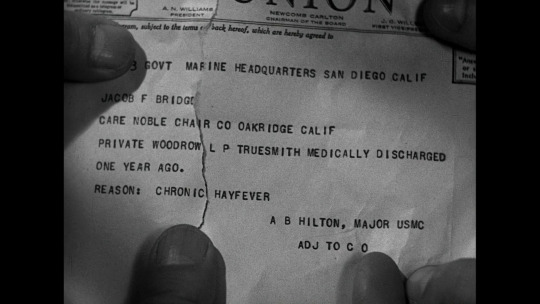

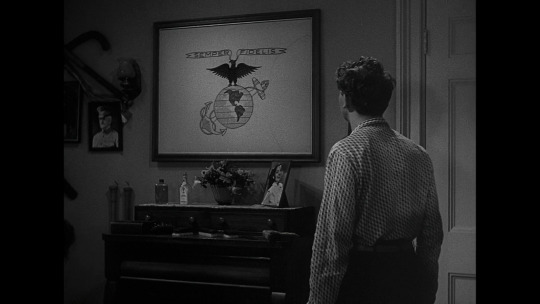
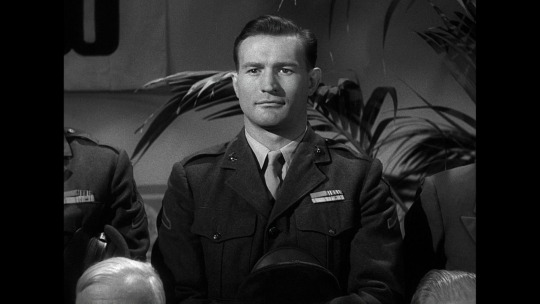
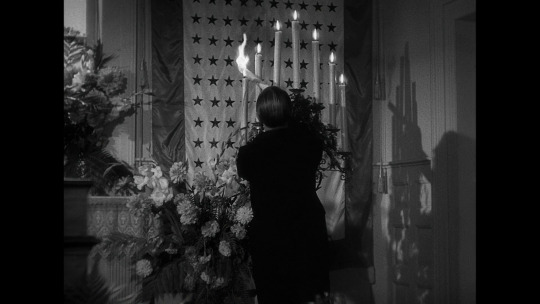

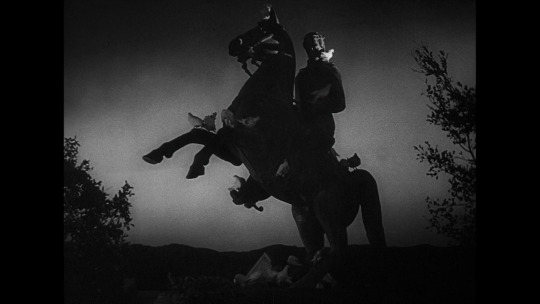
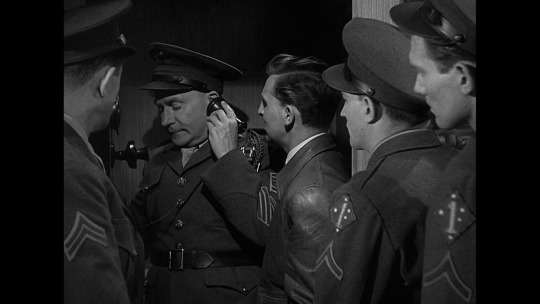
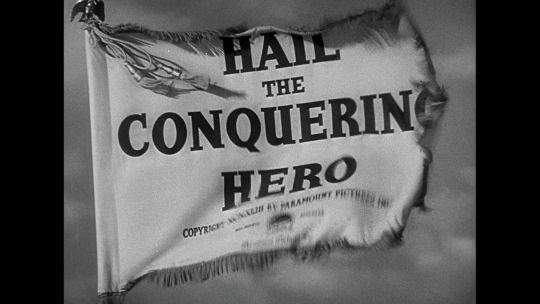
"This is the last act. The farce is over. The lying is finished, and the coward is at least cured of his fear."
Hail the Conquering Hero, 1944.
Dir. & Writ. Preston Sturges | DOP John F. Seitz
1 note
·
View note